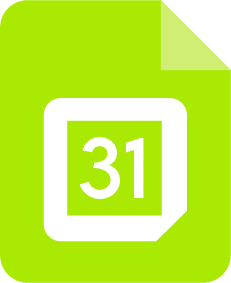4 Easy Ways to Create a Checklist Strategy
share this timesaver:
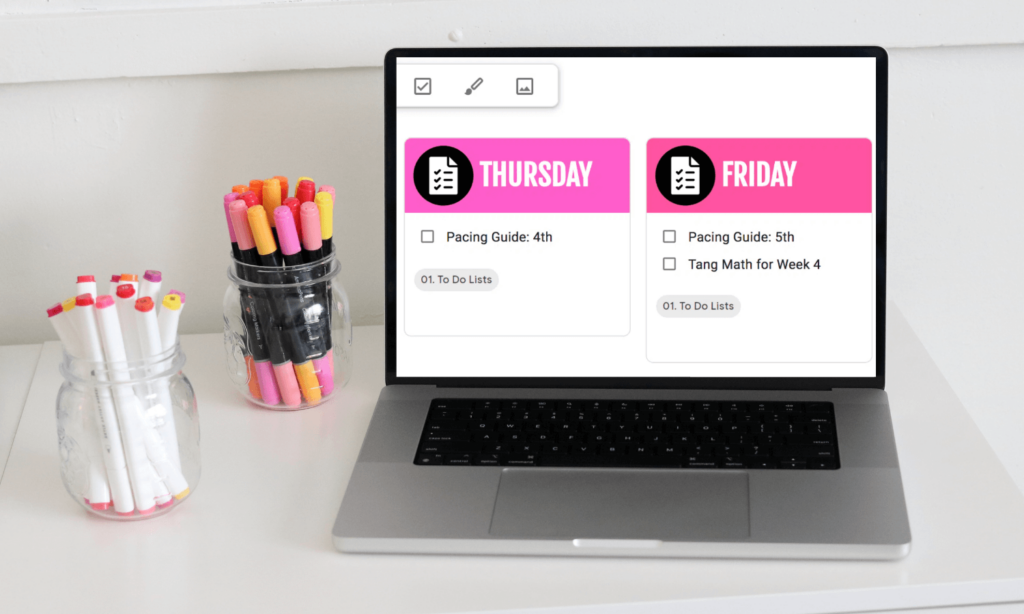
Checklists are a teacher’s best friend, right? Although…
It really helps to have a checklist strategy.
Think of how many times our checklists feel overwhelming. I mean they just keep growing and growing as we add more items!
And don’t even ask me how many times I’ve completed a random task (NOT on my list of course) then added it to the checklist, just to feel that joy of checking it off! I know I’m not the only one, right??
But this all changed when I started being more purposeful about how I set up my lists.
And I wanted to take a moment to share a checklist strategy that has helped me SO much these past years. And I hope it will be helpful for you as well!
Here are the quick steps:
google keep for checklists
You can use your favorite app/resource for your checklists. I like to use Google Keep because there are SO many great checklist features. With Keep, you can:
- add items and click enter to create a list quickly
- move items around with a simple click and drag
- pin your current checklist to the top, so you can find it fast
I have more to share about Keep (in fact, I have a whole course on it!) at the end of this post. But now it’s time to set up YOUR checklist strategy!
1. create 5 CHECKLISTS for the week
First, create a separate checklist for each day of the week. This will allow us to plan our checklist strategy for each day:
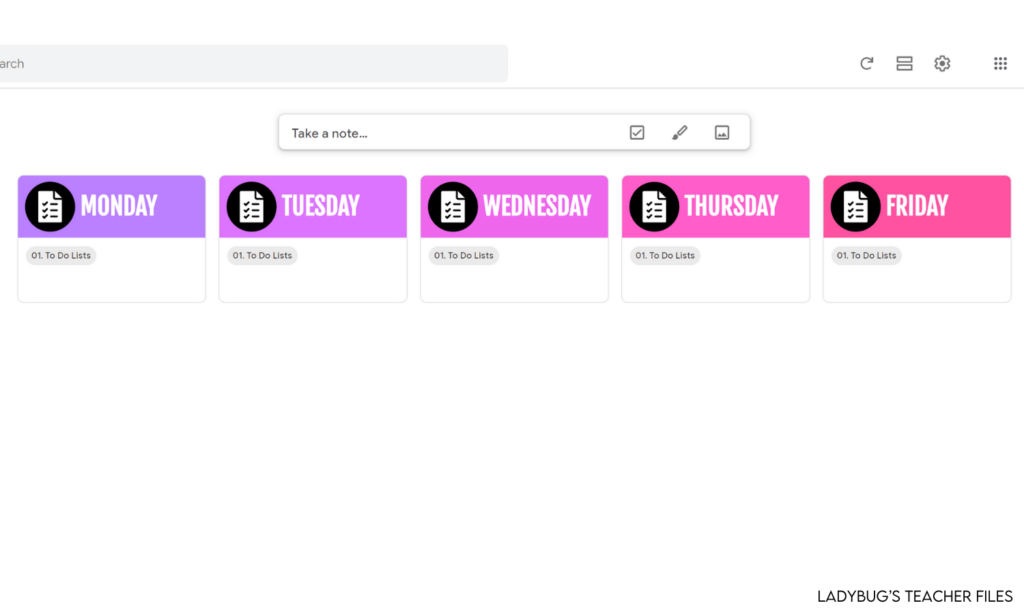
2. START WITH LONG-TERM TASKS
Now that you have checklists set up for each day, start with the largest projects and distribute them over the week first.
This keeps these big tasks from feeling overwhelming…plus it makes it feasible to complete the project.
Some long term tasks can include:
unit
planning
lesson planning
report card comments
long-term projects
grading and paperwork
In this example, I had to finish trimester pacing guides for grades K-5 quickly.
To make the process easier, I divided this large task over the entire week:
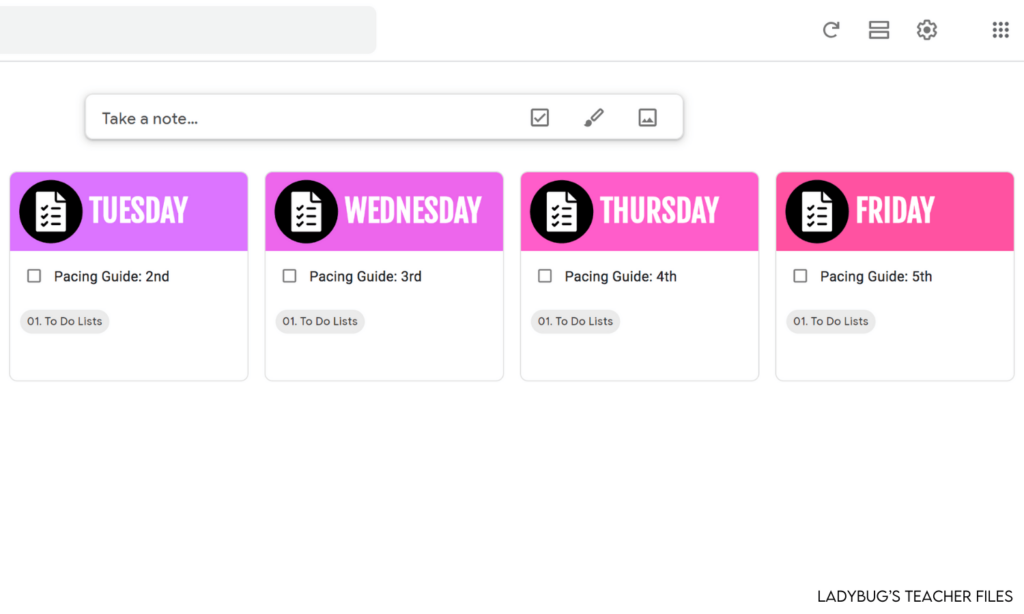
3. PLUG IN SCHEDULED TASKS
Once your larger projects are planned out, we can add in those routine tasks.
You know, the ones you end up doing on certain days each week (if you are a creature of habit!).
For example, one of my scheduled tasks is prepping math puzzles for our classrooms…this is something I do on Fridays:
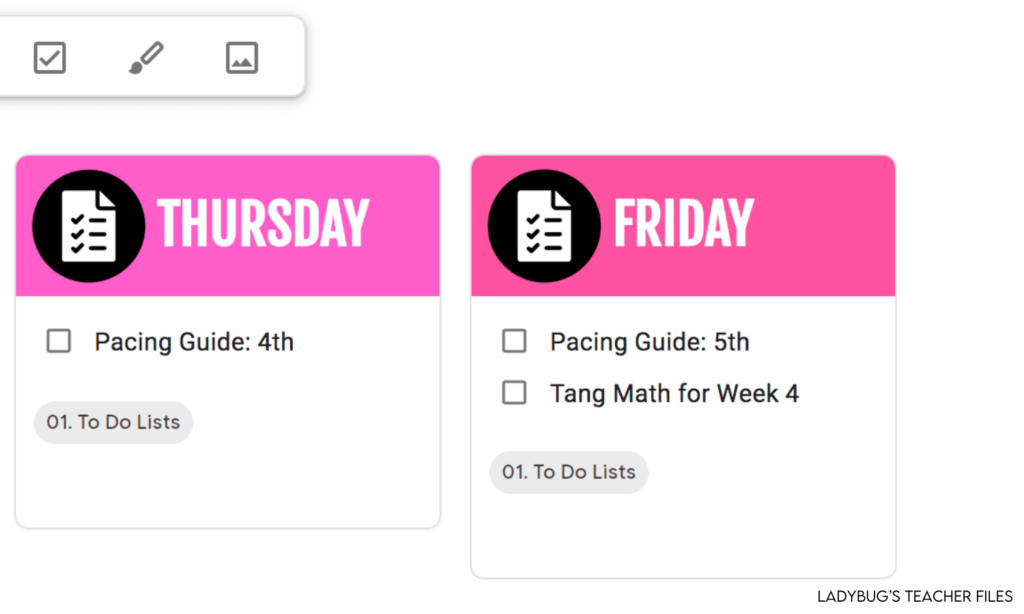
If you don’t have tasks for certain days, this is a great way to get on a schedule with some weekly jobs.
These routine tasks can include:
photocopying
grading
entering
data
emailing families
setting up centers
4. ADD IN TASKS with a due date
The final tasks we can add are the ones that must be completed by a certain due date.
In this example, I need to complete PLC agendas for the following week by Wednesday evening:

And that’s it! These easy steps will help you devise a checklist strategy that will always get everything done…on time!
It really does help in creating feasible, non-overwhelming checklists.
SET UP A CHECKLIST strategy, FAST!
Would you like to try this checklist strategy?
Feeling unsure of where to begin?
I have an interactive course filled with quick steps on setting up checklists in Google Keep, in no time! Together we will create beautifully-designed checklists (and so much more) to make your teaching life much easier!
Please click below to design with me:
Thanks so much for reading!
What is your favorite app for creating checklists? Do you have any tips to share that keep your lists from getting overwhelming?
Please share your favorite strategies with us below!
Kristen Beakey
I’m an elementary math coach with a passion for sharing beautiful, streamlined solutions to save teachers time. Ladybug’s Teacher Files has been a work of love since 2010. Filled with tech tutorials, math ideas, and organization…I strive to save you time in all aspects of your teaching!





